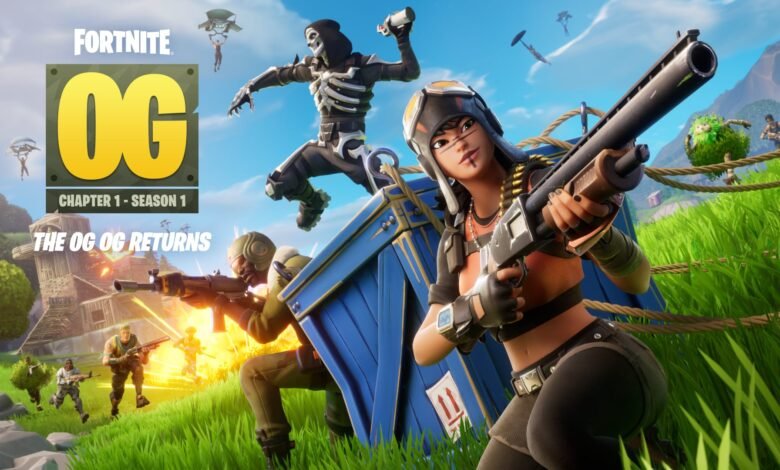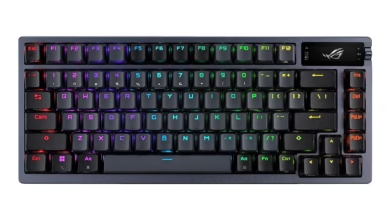Fortnite OG: A Return to the Roots of Battle Royale

Introduction: Why Fortnite OG Matters
fortnite og When Fortnite first hit the gaming scene back in 2017, it quickly became a cultural phenomenon. It wasn’t just another battle royale game—it was the battle royale game that redefined the genre and set new standards for online multiplayer experiences. Over the years, Fortnite has evolved drastically with countless seasons, collaborations, and mechanics. But if you’ve been following the community closely, you’ll know that the phrase “Fortnite OG” carries a very special weight.
Fortnite OG refers to the original days of the game—when Tilted Towers was the hot drop, Pump Shotguns ruled every close-range fight, and players would build scrappy forts on a whim. It’s about that raw, simple, yet insanely addictive gameplay that hooked millions of players worldwide. For long-time fans, Fortnite OG isn’t just a version of the game—it’s a nostalgic journey back to the early days when things felt fresh, exciting, and unpredictable.
But Fortnite OG isn’t only about nostalgia; it’s also a statement about how games evolve and how communities sometimes crave simplicity over constant innovation. Let’s dive deep into why Fortnite OG is so iconic, what makes it special, and why it continues to matter in 2025 and beyond.
The Golden Era of Fortnite

The original Fortnite era, often called Fortnite OG by players, is widely remembered as the golden age of the game. Back then, the map was smaller, the weapons were fewer, and the strategies were simpler. But despite—or perhaps because of—that simplicity, the game had a magic that made it irresistible.
One of the most defining features of Fortnite OG was the feeling of discovery. Every match felt like an adventure. Landing at Pleasant Park or Retail Row wasn’t just about loot—it was about the stories you and your friends created there. The game didn’t have dozens of mechanics layered on top of each other. There were no overcomplicated mobility items, no overwhelming loot pools, and no endless collaborations crowding the map. Instead, it was straightforward: drop in, gather weapons, build, and fight.
The beauty of Fortnite OG was also in its balance. While players had strong preferences between the Scar, the Pump Shotgun, or the Bolt-Action Sniper, no weapon felt outrageously overpowered compared to the rest. The fights were tense, strategic, and skill-based. Building was still in its early stages, so matches didn’t always end in sky-high towers of edits—it was just players fighting it out with whatever they had. That raw, balanced gameplay is what many players still crave when they talk about Fortnite OG.
Nostalgia and Community Connection
One of the biggest reasons why Fortnite OG is still so heavily discussed is nostalgia. Players who were part of the community during the early days remember the excitement of their first Victory Royale, the iconic dances, and the buzz around each new update. These weren’t just small tweaks—they were events. Epic Games would drop a new weapon or location, and the community would collectively explode with excitement.
Fortnite OG wasn’t just about the gameplay—it was about the social connection it fostered. Friends would hop online after school or work, jump into squads, and spend hours exploring, building, and laughing. Fortnite became a shared experience, one that extended beyond the game into memes, YouTube montages, and even mainstream media.
The cultural impact of Fortnite OG can’t be overstated. Streamers like Ninja skyrocketed to fame during this time, esports events started to take shape, and the game even hosted virtual concerts long before other platforms tried to replicate it. That sense of being part of something bigger than just a video game is exactly why Fortnite OG holds such a dear place in people’s hearts.
The Evolution of Fortnite and the Call for OG
Over time, Fortnite transformed. Epic Games constantly added new mechanics—vehicles, mythic weapons, crossovers with Marvel, Star Wars, anime, and countless other franchises. The map changed almost every season, introducing new locations and sometimes removing beloved ones. For many players, these updates kept the game fresh and exciting. But for others, it became overwhelming.
The complexity of later Fortnite seasons made some players long for the simplicity of the original days. When every match involves dozens of items, overpowered abilities, and massive collaborations, it can feel less like Fortnite and more like a chaotic mashup. That’s where Fortnite OG comes in—it represents a return to basics, a time when skill and creativity mattered more than which mythic item you had in your loadout.
The community’s call for Fortnite OG grew louder with each passing year. Players wanted the old map back. They wanted the original weapons and mechanics. They wanted to relive those early experiences when everything felt new and unrefined. Epic Games eventually responded to this demand with special modes and limited-time returns to OG-style gameplay, sparking massive excitement and showing just how strong the nostalgia for Fortnite OG really is.
Why Fortnite OG Still Works Today
The reason Fortnite OG continues to resonate with players, even years later, is because of its timeless design. At its core, Fortnite was never just about flashy items or wild collaborations—it was about gameplay that was easy to pick up but hard to master. That’s why even in 2025, players still get excited when Epic teases a return to the OG map or OG mechanics.
There’s also a broader gaming trend at play here. Many successful games today are revisiting their roots because communities crave authenticity and simplicity. Call of Duty has leaned into remastered maps, World of Warcraft has its “Classic” version, and even Minecraft thrives on its unchanged core. Fortnite OG fits perfectly into this pattern, proving that sometimes the best move for a game’s future is to honor its past.
For new players who never experienced Fortnite OG, it’s a chance to see what all the hype was about. For veterans, it’s a chance to relive the golden days and reconnect with the version of Fortnite that started it all. It bridges the gap between generations of players, showing that the original formula still has the power to captivate.
The Future of Fortnite OG
So, what’s next for Fortnite OG? While Fortnite will undoubtedly keep evolving with new content, mechanics, and collaborations, it’s clear that Epic Games recognizes the value of nostalgia. Events like the Fortnite OG season have proven that players will flock back in massive numbers when given the chance to revisit the past.
It’s very likely that Fortnite OG will continue to appear in cycles—either as a limited-time mode, seasonal throwback, or even as a permanent option for players who prefer the old-school style. With the demand so high, Epic has every reason to keep tapping into that nostalgia. It keeps older players engaged, introduces new players to the history of the game, and reminds everyone why Fortnite became a cultural juggernaut in the first place.
Ultimately, Fortnite OG isn’t just about the game—it’s about the feeling it created. That blend of simplicity, excitement, and community connection is something rare in the gaming world. And as long as players remember those feelings, Fortnite OG will never truly fade away.
Conclusion
Fortnite OG is more than just an old version of a popular game—it’s a cultural milestone. It represents the golden age of Fortnite, a time when the game was fresh, simple, and endlessly exciting. It’s about nostalgia, community, and the magic that happens when a game connects with people on a deeper level than just mechanics.
As Fortnite continues to evolve, the call for Fortnite OG will always remain. Whether it’s through special events, throwback seasons, or community-driven nostalgia, the spirit of Fortnite OG is alive and well. It’s proof that sometimes the best way forward is to look back, remember where it all started, and keep that spirit alive for both old fans and new players alike.



